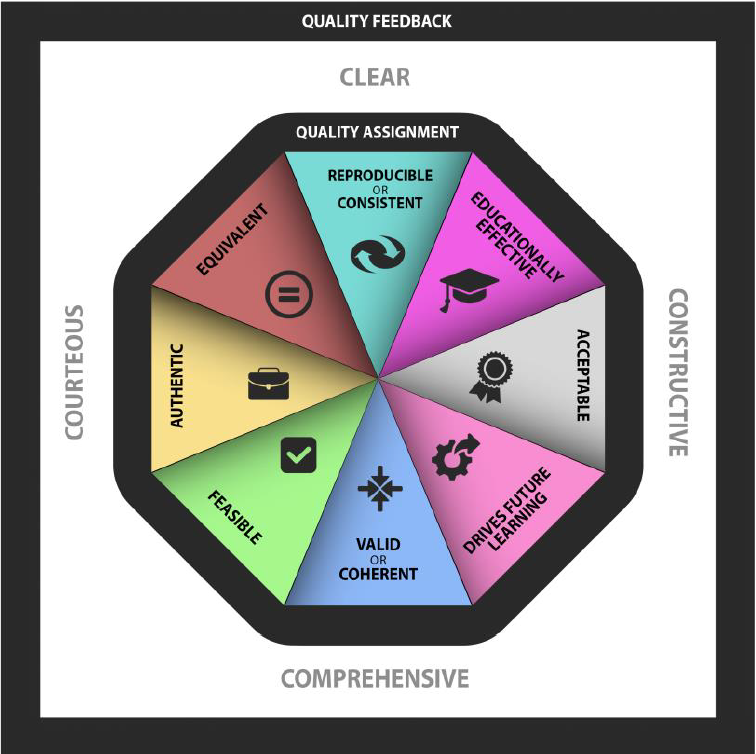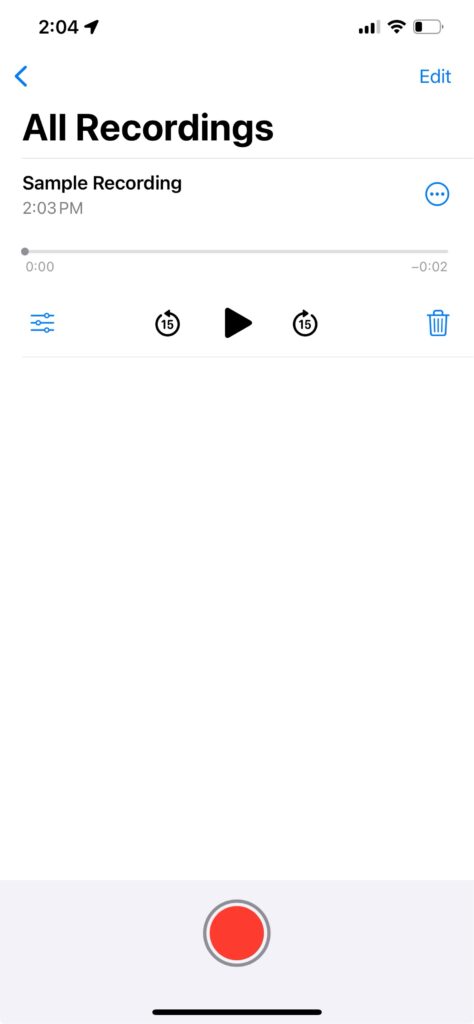What is Quality Feedback?
Feedback is key for student learning and must be prompt and meaningful so to correct issues and reinforce strengths (Ericsson, Krampe, &Tesch-Römer, 1993).
Effective faculty use assessment and feedback tools that enhance learning by providing students with timely information about their performance on assignments and activities as well as their progress toward achieving course goals.
Quality Feedback Is
Quality Feedback Is Not
- Specific about the learner’s progress toward the learning goal
- General praise or affirmation
- Only meaningful within the context of an understood learning target
- Instructions on what to do next
- The voice of an expert
- Less reliable from peers
- Most meaningful during the learning process
- As valuable at the end of the learning process
(Hattie & Timplerley, 2007)

(Thomas & Arnold, 2011; Norcini et al., 2011)
Examples
“Karen, you have done a nice job of assessing the patient’s demeanor and actions. Consider asking follow-up questions regarding the patient’s support system at home and spiritual needs. Refer to Chapter 8 of the textbook for additional information on home support systems and some sample questions.
“Good job. Proceed to the next module.”
Why Is Quality Feedback Important for Students
Timely and meaningful feedback provides your online students with critical information about their learning performance against stated course objectives.
Not only does feedback support quality outcomes as it provides students opportunities to remediate and improve specific aspects of their performance, but also feedback on progress and performance can positively influence learner motivation, self-efficacy, confidence, persistence, and self-regulation.
How Can Faculty Produce Quality Feedback?
Below are some ways that you can employ effective feedback in your online course.
- Provide clear, specific, concise information that references measurable criteria for the assignment evaluated and help students understand what they need to do to achieve course success (related to QM Standard 2.1).
- Guide learner development and performance based on identified criteria and scope of intended outcomes (related to QM Standard 2.2).
- Identify community misconceptions and redirect concept development processes toward appropriate cognitive schemas (related to QM Standard 2.3).
- Provide clear, specific, constructive feedback throughout the course that is timely enough to help the learner remediate and improve on subsequent performance (related to QM Standard 2.4).
- Motivate and encourage learners through responsiveness and performance feedback (related to QM Standard 2.5).
What Might Quality Feedback Look Like In an Online Course?
- Faculty provide individualized feedback on assessments promptly and no more than 7 days after submission, including explanatory feedback that allows students to recognize their strengths and areas of improvement as they progress towards higher learning goals.
- When grading, faculty use embedded rubrics, if configured in the LMS.
- Faculty members follow up personally with students that do poorly on their academic work, offering opportunities for discussion and/or small-group extra work.
- Faculty members reiterate performance expectations through course announcements and other communications.
- Through broader communications or asynchronous activities (such as discussion boards), faculty members enhance the cognitive awareness of the student community by sharing general progress made toward learning goals.
- Clear, continuous, communications convey high performance expectations to students.
- Faculty use multiple media (e.g. audio / video / screencapture) throughout the class to provide feedback to students.
- Encourage or embed opportunities for students to provide feedback to their peers.
Multimedia Feedback
Benefits
There are several benefits to providing audio or video feedback (or both) to students.
- Efficient: Recording audio or video feedback enables quick and easy capturing of thoughts and feedback without spending the time carefully drafting multi-paragraph feedback, especially with larger course numbers. As an added bonus, students feel a deeper connection with the instructor when hearing and/or seeing the instructor responses.
- Easy Upload: Instructors can quickly and easily upload multimedia feedback to the gradaebook, discussion posts, and assignment portals when addressing student submissions.
- Portable: No laptops needed to record and provide detailed multimedia feedback! You can use the features on your smartphone to record and upload audio or visual feedback. Your smartphone can be your recording student.
Using the LMS
Some LMS, such as Canvas and Blackboard, have built in tools to allow you to record multimedia feedback directly in the grading area. This is a quick and easy way to use the built-in functionality of your LMS as you grade!
How-To Guide for Smartphone Audio Feedback
iPhone
It is easy to record audio feedback using your phone and send the files to your students through the iPhone Voice Memos app.
How To: With iPhone
- Open your Voice Memos app
- Click the record button
- Save recording
- Send to student (or upload in LMS)

Android
Similar to the Voice Memos app on the iPhone, there is a voice recording app that you can use to quickly capture audio feedback.
How To: With Android
- Use Voice Recorder (built-in or available on the app store)
- Choose between Standard and Interview mode.
- Click the record button
- Save recording
- Send to student (or upload to LMS)
Find more directions on recording and editing using an Android here.

Other Tools
There are a number of other tools out there that you can also use to capture and edit video for feedback, such as Zoom, Kaltura, Camtasia, Panopto, ScreenPal (formerly Screencastomatic), and more.
Before launching into your recording process, again, familiarize yourself with the tools available to you on your campus for both video capture and editing. If your institution has a studio available, get yourself scheduled to have some recording time with the team.
If you are using the tools for the first time, speak with either your AP instructional designer or on-campus instructional design team to learn more about how to use these tools. Take some time to create practice videos where you can get comfortable with a recording work flow. Understanding the capabilities of the tool can help you feel more comfortable as you record!
References
Ericsson, K. A., Krampe, R. T., & Tesch-Römer, C. (1993). The role of deliberate practice in the acquisition of expert performance. Psychological Review, 100(3), 363–406. http://dx.doi.org/10.1037/0033-295X.100.3.363
Hattie, J., & Timplerley, H. (2007). The power of feedback. Review of Educational Research, (77(1), 81-112. doi:0.3102/003465430298487
Norcini, J. J., Anderson, B., Bollela, V., Burch, V., Costa, M. J., Duvivier, R., & … Roberts, T. (2011). Criteria for good assessment: Consensus statement and recommendations from the Ottawa 2010 Conference. Medical Teacher, 33(3), 206-214. doi:10.3109/0142159X.2011.551559
Thomas, J. J., & Arnold, R. M. (2011). Giving feedback. Journal Of Palliative Medicine, 14(2), 233-239. doi:10.1089/jpm.2010.0093

